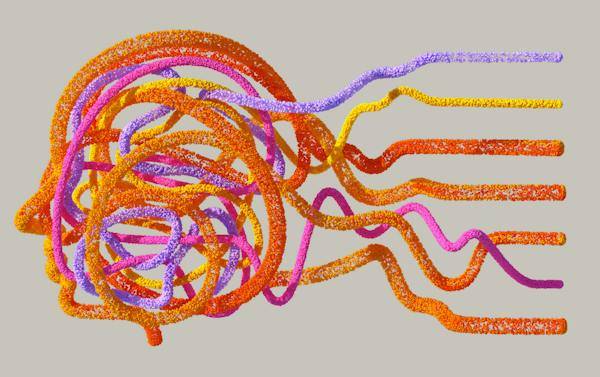The digital twin is a virtual environment created after gathering data from an object.
In healthcare, digital twins are virtual models that are built after combining vast amounts of data on organs, diseases, genes, tissues, treatment, medications, etc. These models replicate patients’ data and can be used to test the safety and efficacy of drugs and treatments. Virtual evaluation of pharmaceutical products and medical devices is expected to improve patient health. Due to these reasons, the US healthcare digital twins market is anticipated to rise at a CAGR of 23.2 percent during the 2023 to 2030 timeframe.
Furthermore, digital twins offer real-time data insights on a wide range of healthcare aspects and can study healthcare issues from a vantage point than standard simulations, with the potential to improve treatment, drugs, medical devices, and more. This technology is still in its early stages but offers huge potential in the healthcare industry.
Let’s look at the article about the role of digital twin technology in healthcare, along with its real-world examples.
Role of Digital Twin Technology in Healthcare
1. Hospital Resource Management: Real-time hospital operations data is leveraged to create digital twins for hospital resource management. This includes detecting bed shortages, creating operating rooms, optimizing medical staff schedules, etc. Such data is useful in increasing the efficiency of hospitals and staff performance, decreasing costs, and implementing strategies to counter issues related to hospital systems.
3. Clinical Trials and Drug Discovery: Digital twin models are used to test possible treatments and pharmacy products. It speeds up the process and eliminates the possible need for animal or human trials, making drug development easier and safer.
3. Medical Device Development: With digital twin technology, developers can test operating conditions, check design variations, and foresee malfunctions of medical devices. This approach reduces the risk of product failures and is cost-effective.
4. Treatment Planning: With a digital twin model of the human body, physicians can discover disorders before the onset of diseases. They can also experiment with which treatment works best and improve patient outcomes. A human being model may also aid with planning surgeries.
5. Personalized Diagnosis: Digital twin technology gathers vital data from EHRs, telemedicine, or patient portals, which helps to track conditions. The physicians use the data to track the reactions of patients to each treatment.
6. Research: By using digital twins technology, researchers can visualize the entire lifecycle of a disease, including factors that affect it. This can transform healthcare approaches and treatment, mainly for complex cases.
7. Medical Education: Digital twins offer an interactive platform to medical and nursing students that helps them understand human body conditions and surgical procedures.
Real-World Examples of Digital Twin Technology in Healthcare
1. Cleveland Clinic gets $3.14 Million for Digital Twin Research
The NIH (National Institute of Health) supported Cleveland Clinic with a $3.14 million grant for research on digital twin technology in healthcare. The goal is to leverage digital twins to understand healthcare disparities based on where one lives. Researchers from MetroHealth and Cleveland aim to utilize this information to create strategies to reduce disparities in health outcomes.
The research team is using data models built from EHRs to scrutinize health trends from a combined health registry of over 250,000 patients. The digital twin technology will accurately represent complex environmental, economic, and social aspects that can lead to disparities.
2. Dassault Launches Digital Twin for Health Research
Dassault Systems has launched ‘Emma’ as its digital twin technology for health research. Emma was developed using health data to conduct tests and gain more insights into varied diseases and therapies. The highlight includes Emma’s reaction to different simulation processes in the Living Heart project, Living brain studies for Alzheimer’s disease, and testing of CorNeat Vision corneal transplants.
This research data can be useful for physicians to analyze how a disease progresses in the human body and what type of treatment would suit the patient.
3. Digital Twin for Brain Surgery
With AI and digital twin technology, Atlas Meditech is enabling brain surgeons to prepare for preoperative procedures with a new degree of realism.
The NVIDIA Omniverse 3D development platform and the MONAI medical imaging framework are two tools that Atlas Meditech, a brain-surgical intelligence platform, is using to create AI-powered decision assistance and high-fidelity surgery rehearsal platforms. Its goal is to increase patient safety and surgical results.
To build a digital twin of patients’ brains, Atlas Pathfinder has adopted a MONAI Label that can support radiologists by automatically annotating CT and MRI scans to segment normal tumors and structures.
Wrapping Up
Digital twin technology in healthcare marks a pivotal moment in the evolution of data-driven, patient-centric solutions. The concept of digital twins offers real-time reflection on patient health, which can be used for personalized treatment plans, improved diagnostics, and predictive analytics in healthcare.
By fostering collaborative efforts among healthcare professionals, technology developers, and policymakers, we can unlock the full potential of digital twins, paving the way for a healthcare landscape that is not only more efficient and effective but also more compassionate and tailored to the unique needs of each patient.
The journey toward realizing the full impact of digital twins in healthcare is an exciting one, promising a future where precision and personalization redefine the standards of care.
If you’re looking to transform your healthcare organization with innovative healthcare software tools, then connect with Arkenea, one of the leading healthcare software development companies in the USA. With over 14 years of experience in the field, our team of expert developers delivers world-class software solutions that match industry standards.
